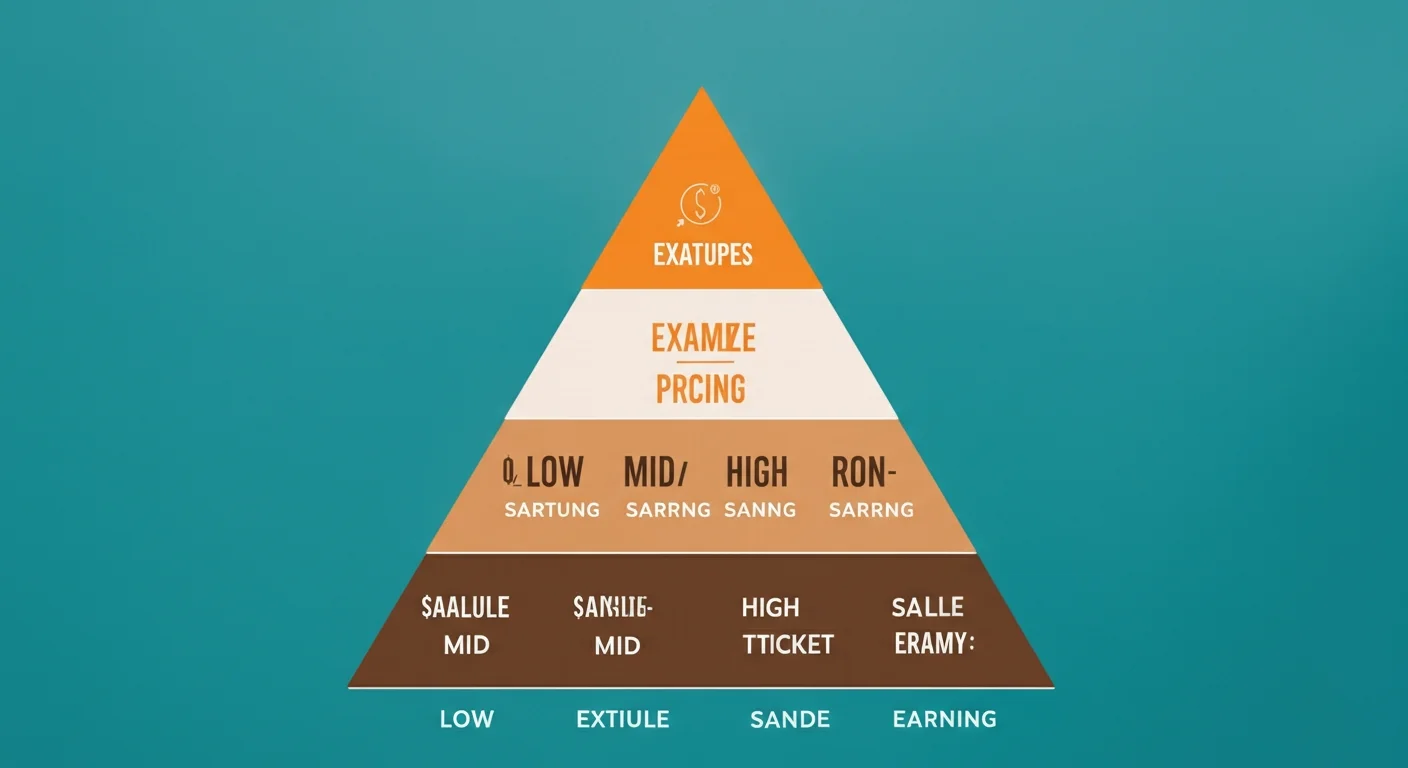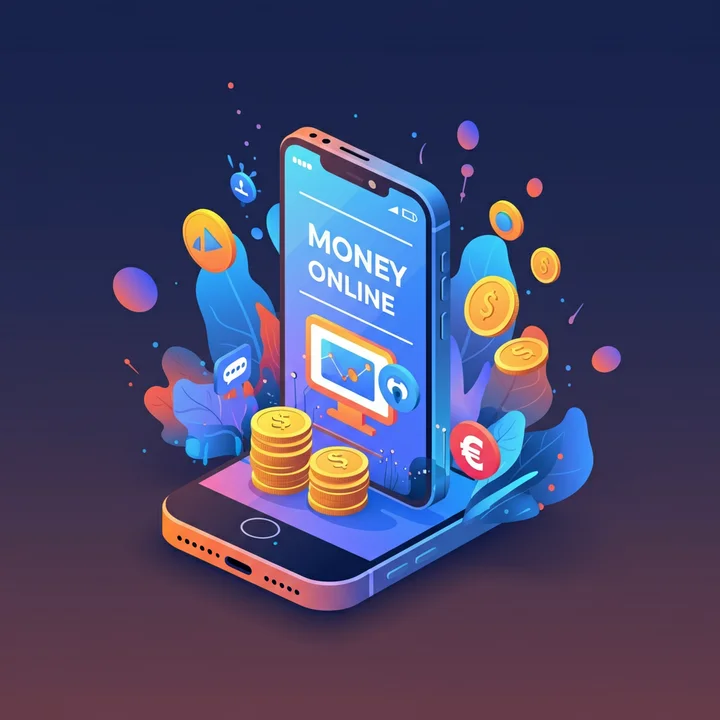In 2025, creating and selling an online course stands as one of the most powerful and scalable ways to build passive income online. Imagine packaging your unique knowledge, skills, or expertise into a valuable digital product just once and having it generate income for you consistently, long after you've recorded the last lesson. This model fundamentally shifts you from trading time for money to leveraging your intellectual assets for continuous revenue.
Whether you're an experienced coach, a seasoned freelancer, a subject matter expert, or even a passionate hobbyist, this comprehensive guide will walk you through the precise steps to create a high-quality online course and implement monetization strategies that allow you to sell it forever—equipping you with essential tools and insider tips for building a thriving online business.
1. Why Online Courses Are a Smart Passive Income Stream in 2025

The e-learning industry is experiencing explosive growth, projected to exceed $500+ billion by 2027. This isn't just a trend; it's a fundamental shift in how people acquire skills and information. For ambitious entrepreneurs, this space presents an unparalleled opportunity for passive income for several compelling reasons:
True Passive Income: Unlike client work or hourly services, an online course is a digital product you create once. After the initial effort, sales can continue 24/7, across different time zones, without requiring your active involvement for each transaction. This is the essence of passive income—earning while you sleep.
Unlimited Scalability: One single course can be sold hundreds, thousands, or even tens of thousands of times. There's no limit to how many students you can enroll, making it an incredibly scalable online business model compared to one-on-one coaching or services.
Authority & Brand Building: Creating a course positions you as an expert in your field. This builds significant authority and credibility, which can lead to other opportunities like speaking engagements, consulting, or attracting higher-paying freelance clients.
Lead Generation & Community Growth: Your course can serve as a powerful lead magnet for other digital products, services, or coaching programs. It also fosters a dedicated community around your brand, creating a loyal audience.
Low Overhead & Evergreen Potential: The initial investment is primarily your time and knowledge. Once built, maintenance expenses are minimal. By creating evergreen content (content that remains relevant over time), your course can continue to generate income for years with minimal updates.
Global Reach: Students worldwide can access your online course through online platforms, creating a truly global market for your expertise.
2. Step-by-Step: How to Create an Online Course That Sells
Building a successful online course isn't about perfection; it's about delivering transformative value. Here's how to do it strategically:
✅ Step 1: Choose a Profitable Course Topic—Solve a Real Problem
Your course topic is the cornerstone of its success. Don't just teach what you know; teach what people need and are willing to pay for.
Ask yourself these critical questions for topic validation:
What specific skills or knowledge do I possess that others frequently find challenging or seek solutions for? Think about common questions you get asked or problems you regularly help people solve.
Have people already paid me (or others) for advice, services, or similar knowledge in this area? This is strong proof of market demand. Look for existing solutions and identify gaps.
Are there existing courses or products in this space? While competition might seem daunting, it's actually a positive sign! It indicates proven demand. Your goal isn't to be the only one but to be better or different.
Examples of highly successful course topics in 2025:
"How to Use [Specific Software e.g., Canva] to Design High-Converting Social Media Graphics"
"Beginner Crypto Investing for Non-Techies: A Step-by-Step Guide to Your First Portfolio"
"Freelance Writing for SaaS Brands: How to Land High-Paying Clients & Deliver Killer Content"
"How to Start a Side Hustle with Zero Budget & Turn It into a Consistent Online Income"
"Mastering [Specific Skill, e.g., Public Speaking] for Introverts: Confidently Deliver Presentations"
"ChatGPT for Small Business Owners: Automate Your Marketing & Customer Service"
Tools to Validate Demand & Conduct Keyword Research:
Google Trends: See if interest in your topic is stable or growing over time.
AnswerThePublic: Discover questions people are asking around your topic.
Udemy, Coursera, Skillshare: Browse these marketplaces. What are the best-selling courses? Read their reviews to understand what students love (and what's missing).
Amazon Books/KDP: Look at eBook bestsellers related to your topic.
Reddit & Niche Forums: What problems are people discussing? What solutions are they seeking?
Keyword Research Tools (e.g., Ahrefs, SEMrush, even ChatGPT): Identify popular search terms related to your topic.
✅ Step 2: Define a Clear, Transformative Outcome—Sell the Solution, Not Just the Information
People don't buy information; they buy transformation. Your course needs to promise a specific, tangible result. Instead of a vague title like "Learn Copywriting," focus on the outcome:
Weak: "Learn Copywriting"
Strong: "Write High-Converting Landing Pages in 5 Days (Even If You're Not a Copywriter)"
Weak: "Introduction to Photography"
Strong: "Capture Stunning Photos with Your Smartphone: A Beginner's Guide to Professional-Looking Shots"
How to define your outcome:
Identify the "Before" State: What is your ideal student struggling with before taking your course? (e.g., "overwhelmed by marketing," "can't land freelance clients," "struggles with public speaking").
Define the "After" State: What specific, measurable result will they achieve after completing your course? (e.g., "a clear marketing plan," "a portfolio that attracts high-paying clients," "confidence speaking to any audience").
Craft a "Promise Statement": "[Target Audience] will achieve [Specific Outcome] by [Timeframe/Method] without [Common Obstacle]."
This outcome-driven approach is a core marketing strategy that will differentiate your course and make it much easier to sell.
✅ Step 3: Plan the Curriculum—Structure for Success
Once you have your clear outcome, reverse-engineer the steps a student needs to take to get there. Break down your topic into digestible, logical modules and lessons.
Use a simple, effective 4-part structure:
Introduction/Welcome Module:
Overview: What will the student learn and achieve? Reiterate the clear outcome.
How to Use the Course: Guide them on how to get the most out of your lessons.
What to Expect: Set expectations for the learning journey.
Motivation: Inspire them and get them excited!
Core Modules (3–7 focused lessons):
Break your main topic into logical steps. Each module should cover a distinct subtopic.
Each lesson within a module should be focused on a single concept, typically 5–15 minutes in length for videos.
Vary your content: use video lectures (you on camera, screen shares, or slides with voiceover), text lessons, downloadable PDFs, checklists, templates, quizzes, and external links.
Action Steps/Resources:
Worksheets: Practical exercises to apply what they've learned.
Templates: Ready-to-use documents (e.g., email templates, pitch decks, Notion templates).
Tools & Resources List: Curated list of helpful software, websites, or books.
Case Studies: Real-world examples of the strategies in action.
Bonus Content/Community (Optional but Recommended):
Expert Interviews: Add interviews with other specialists to provide diverse perspectives.
Live Q&A Sessions: Offer occasional live sessions for higher-tier students.
Private Community Access: A dedicated Facebook group, Discord server, or forum for students to connect and ask questions.
Bonus Lessons: Dive deeper into related topics or provide advanced strategies.
Content Best Practices:
Keep it Concise: Respect your students' time. Focus on delivering value efficiently.
Actionable: Every lesson should lead to a clear understanding or a specific action they can take.
Modular: Design your course so individual lessons or modules can be easily updated or replaced without overhauling the entire course. This is key for evergreen content.
✅ Step 4: Record and Edit the Content—Professional Enough, Not Perfect
You don't need a professional studio to create a high-quality online course. Focus on these key elements to ensure a professional (not necessarily perfect) look and feel:
Audio Quality (MOST IMPORTANT!): Clear, crisp audio is paramount. Viewers will tolerate average video quality but not bad audio.
Tools: A simple USB microphone like a Blue Yeti or Rode NT-USB Mini is a great investment. Even good-quality smartphone headphones can work in a pinch.
Environment: Record in a quiet room with minimal echo.
Video Quality:
Camera: Your laptop's built-in webcam, a modern smartphone camera, or an entry-level DSLR/mirrorless camera.
Lighting: A ring light or simply good natural light (facing a window) can make a huge difference. Avoid backlighting.
Background: Keep it clean and uncluttered. A plain wall, a bookshelf, or a virtual background can work.
Screen Recording:
Tools: Loom (free for short videos), OBS Studio (free, open-source, powerful), or the built-in screen recorder on your Mac/Windows.
Slides & Visuals:
Tools: [suspicious link removed], Google Slides, or PowerPoint for creating professional-looking presentations. Keep slides clean and text minimal.
Editing Software:
Beginner-Friendly: CapCut (desktop/mobile, free), iMovie (Mac, free), Google Photos editor (basic cuts).
Intermediate: Descript (edits audio/video like a text document, great for efficiency), DaVinci Resolve (free, powerful but steeper learning curve).
Key Editing Principles: Cut out long pauses, stutters, and unnecessary filler words. Add intro/outro music, lower thirds (text overlays for key points), and simple transitions.
✅ Step 5: Choose Where to Host and Sell Your Course—Your Digital Hub
Selecting the right platform is crucial for the seamless delivery and monetization of your online course. There are two main categories:
A. All-in-One Course Platforms (Recommended for Most): These platforms handle everything: hosting your videos, delivering lessons, managing payments, student accounts, and even email marketing. They offer greater control and branding.
Pros: Very beginner-friendly, clean interface, robust features for solo creators, excellent student experience. Offers integrated payment processing and email marketing.
Cons: Transaction fees on lower plans, limited customization on basic plans.
Ideal for: solopreneurs, coaches, and small businesses focused primarily on online courses and building an email list.
Pros: Excellent for selling not just courses but also digital products (eBooks, templates), webinars, and memberships from one dashboard. Great customer support and user experience.
Cons: Fewer advanced marketing features compared to Kajabi.
Ideal for: Creators looking for an all-in-one platform to sell multiple types of digital products and build an audience.
Pros: Highly flexible with advanced course builder, strong community features, good for complex curricula. Offers a decent free plan to start.
Cons: Can be slightly more complex for complete beginners than Teachable.
Ideal for: educators, larger content creators, or those needing more advanced course structuring and community features.
Pros: The "Rolls Royce," of course, platforms. Offers a complete online business solution including courses, websites, email marketing, funnels, CRM, and coaching programs. No transaction fees.
Cons: High price point, steeper learning curve.
Ideal for established experts, coaches, and businesses selling high-ticket online courses who need a comprehensive, integrated marketing and sales funnel.
B. Free/Marketplace Options (Good for Testing, Less Control): These are often easier to get started with or offer access to a built-in audience but typically come with less control over pricing, branding, and customer data.
Pros: Huge built-in audience, great for course validation, very easy to upload.
Cons: Very little control over pricing (often heavily discounted), large revenue share taken by Udemy, limited direct access to student data.
Ideal for: testing a course idea, gaining initial traction, or for beginners not overly concerned with direct monetization strategies or branding.
Pros: Extremely simple to launch any digital product (including courses, especially smaller ones). Low fees.
Cons: Less dedicated course functionality than true LMS platforms. More suited for selling video bundles or mini-courses.
Ideal for: minimalists, creators selling smaller digital products or mini-courses alongside other offerings like AI prompts or eBooks.
Pros: Easy to use, handles EU VAT, good for various digital products including basic courses. Offers a generous free plan.
Cons: Less robust course features compared to dedicated LMS platforms.
Ideal for: Those looking for a simple, cost-effective solution to sell courses and other digital products.
Consider your budget, technical comfort level, and long-term online business goals when making your choice.
3. How to Price Your Online Course: Value-Based Monetization Strategies

Pricing your online course isn't just about picking a number; it's a strategic decision that reflects the value you provide and your monetization strategy.
Common Course Pricing Models:
Low-Ticket ($27–$49):
What: Short, highly specific courses, mini-courses, or introductory lessons. Often sold for volume.
Ideal for building an audience, attracting beginners, serving as an upsell/downsell in a sales funnel, or as a high-value lead magnet. Common on marketplaces like Udemy.
Mid-Ticket ($97–$199):
What: Comprehensive DIY transformation courses. These are your bread-and-butter products, offering significant value and a clear outcome.
Ideal for: Most creators looking to build a sustainable passive income stream. Provides a sweet spot between affordability for the student and substantial online income for you.
High-Ticket ($200–$2,000+):
What: Premium courses that often include direct access to you (e.g., coaching, group calls, live Q&A), extensive done-for-you templates, personalized feedback, or certifications.
Ideal for: Established experts, coaches, or those teaching complex, highly profitable skills. Requires more personal involvement but generates significantly higher revenue per student.
Smart Pricing Tips:
Value-Based Pricing: Price based on the transformation your course delivers, not just the hours you put in or the number of videos. If your course helps someone earn an extra $1,000/month, charging $197 is a no-brainer for them.
Beta Launch Strategy: Before a full public launch, offer your course at a discounted "beta" price (e.g., 30-50% off) to a small group of early adopters.
Benefit 1: Gather invaluable feedback for course improvements.
Benefit 2: Collect powerful testimonials and social proof, which are gold for future sales.
Benefit 3: Build initial momentum and excitement.
Tiered Pricing: Offer different versions of your course (e.g., Basic, Pro, VIP) with escalating prices and additional bonuses (community access, templates, live calls).
Scarcity & Urgency: Use ethical scarcity (e.g., "Enrollment closes on [Date]," "Price increases after the first 50 students") to encourage immediate action.
4. How to Sell Your Course on Autopilot: Build Your Automated Sales Engine
The dream of passive income truly comes alive when you set up an automated sales funnel for your online course. This allows you to attract potential students, nurture them, and convert them into buyers without manual intervention.
Create a Free Lead Magnet: This is your primary tool for attracting potential students and building your email list. Offer something highly valuable that solves a small, immediate problem related to your course topic.
Examples: a checklist, a mini-guide, a template, a short webinar, a video series, an eBook excerpt, or a free lesson from your course.
Drive Traffic to Your Lead Magnet: This is your continuous marketing strategy.
SEO Blog Content: Write blog posts optimized for keywords related to your course topic. Embed your lead magnet opt-in form within these posts.
YouTube Videos: Create helpful video tutorials or educational content related to your course. Include a clear call to action to download your free lead magnet in the video description.
Email Newsletters: Promote your lead magnet (and later, your course) to your existing subscribers.
Instagram/TikTok Teasers: Create short, engaging clips that highlight a problem your course solves and direct viewers to the link in your bio for the lead magnet.
Paid Ads: Consider low-budget ads on Google, Facebook, or Instagram targeting your ideal student.
Build a Simple Automated Sales Funnel:
Step 1 (Opt-in): When someone signs up for your freebie (lead magnet), they are automatically added to your email marketing platform.
Step 2 (Nurture Sequence): Send an automated series of 3-7 emails (over several days) that provide more value, build trust, share testimonials, address common objections, and warm them up to your course.
Step 3 (Course Pitch): Conclude the sequence with a clear, compelling pitch for your paid online course, reiterating the transformation it offers.
Set up automation via email marketing platforms:
ConvertKit: Excellent for creators, focusing on audience building and automated sequences.
MailerLite: User-friendly and affordable, great for starting out with automation.
Systeme.io: An all-in-one platform offering email marketing, funnels, courses, and more.
Add an Affiliate Program: Let others promote your course for you in exchange for a commission on sales. Most course platforms (Teachable, Podia, Thinkific) have built-in affiliate management tools. This significantly expands your reach and boosts your online income without direct effort.
5. Bonus: Tips to Make Your Course Evergreen—Long-Term Passive Income
For your online course to truly become a passive income powerhouse, it needs to be "evergreen"—meaning its core content remains relevant and valuable over a long period, minimizing the need for constant updates.
Avoid Time-Sensitive Terms: Steer clear of specific years (e.g., "2023 Marketing Strategies") in your course title, module titles, or video narration. Instead, use phrases like "current marketing strategies" or "up-to-date social media tactics."
Focus on Foundational Principles: Base your core curriculum on unchanging principles, theories, or fundamental skills rather than fleeting trends. While tools and tactics may change, the underlying "why" often remains constant.
Update Key Modules Every 12–18 Months (or as Needed): While the core is evergreen, specific tools or examples might become outdated. Schedule periodic reviews to update individual lessons or add new bonus content to keep the course fresh and relevant. This modular approach is key.
Keep it Modular: Design your course in small, self-contained lessons. This makes it easy to swap out an outdated video or PDF without having to re-record entire modules.
Use Evergreen Tools in Examples: Whenever possible, use widely adopted and stable tools in your demonstrations (e.g., Google Docs, Loom, common email providers) rather than obscure or rapidly changing software.
Future-Proof Your Language: Instead of saying "As we speak in 2025...", use "Today..." or "In the current landscape..."
Final Thoughts: Your Knowledge is Your Goldmine
If your goal is to build substantial passive income, establish yourself as an authority, and help people at scale, creating an online course and selling it forever is unequivocally one of the smartest and most rewarding online business moves you can make in 2025.
You possess unique knowledge and experiences that others are actively seeking. Don't underestimate its value. Start small, focus relentlessly on solving a real problem for a specific audience, and commit to delivering tangible transformation. The content creation tools are more accessible and user-friendly than ever, and the global demand for e-learning continues its robust growth.
Your knowledge is not just valuable; it's a monetizable asset. Consider packaging it, launching it, and allowing it to work tirelessly for you, generating passive income even while you rest. The journey to becoming a successful course creator begins with taking that first step today.



